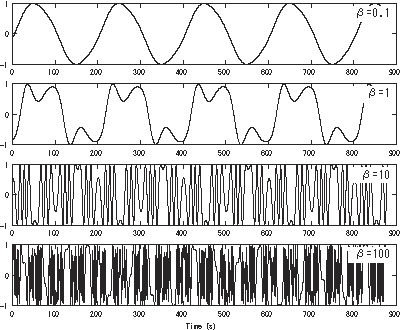
Back FM-Synthese German Síntesis por modulación de frecuencias Spanish FM-synteesi Finnish Synthèse FM French FM Synthesis ID Sintesi FM Italian FM音源 Japanese FM 음원 Korean FM-synthese Dutch Synteza FM Polish
 |
|
|
Frequency modulation synthesis (or FM synthesis) is a form of sound synthesis whereby the frequency of a waveform is changed by modulating its frequency with a modulator. The (instantaneous) frequency of an oscillator is altered in accordance with the amplitude of a modulating signal.[1]
FM synthesis can create both harmonic and inharmonic sounds. To synthesize harmonic sounds, the modulating signal must have a harmonic relationship to the original carrier signal. As the amount of frequency modulation increases, the sound grows progressively complex. Through the use of modulators with frequencies that are non-integer multiples of the carrier signal (i.e. inharmonic), inharmonic bell-like and percussive spectra can be created.
FM synthesis using analog oscillators may result in pitch instability.[2] However, FM synthesis can also be implemented digitally, which is more stable and became standard practice.
- ^ Dodge & Jerse 1997, p. 115
- ^ McGuire, Sam; Matějů, Zbyněk (2020-12-28). The Art of Digital Orchestration. CRC Press. ISBN 978-1-000-28699-1.

